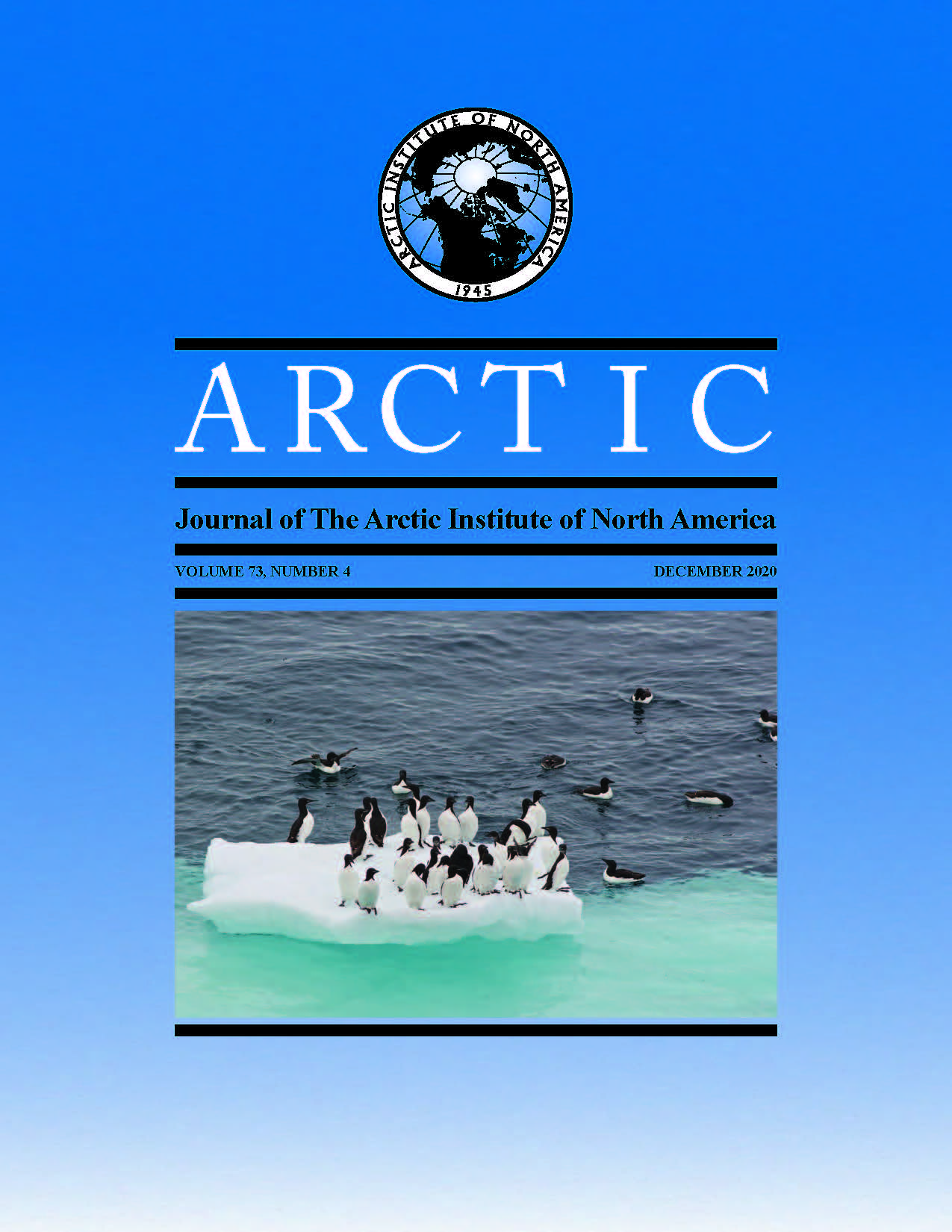Abundance of the Eastern Chukchi Sea Stock of Beluga Whales, 2012 – 17
DOI:
https://doi.org/10.14430/arctic71592Keywords:
Delphinapterus leucas; aerial survey; line transect; distance sampling; abundance; Beaufort SeaAbstract
Aerial line transect surveys were conducted during 19 July – 20 August in each of the years 2012 – 17, with onshore – offshore transects covering a study area of approximately 110 000 km2, from 140˚ W to 157˚ W longitude and from shore to 72˚ N latitude. These data were used to estimate abundance of the eastern Chukchi Sea (ECS) stock of beluga whales. The data were stratified based on bathymetry to reflect strong large-scale gradients in beluga density. A half-normal key function was used to model detection from a dataset of 999 sightings of 2465 belugas. The detection function was found to depend significantly on sky condition and ice coverage. For the years 2012 through 2017, respectively, the estimated numbers of ECS belugas in the study area during the study period were 7355 (CV = 0.17), 6813 (CV = 0.18), 16 598 (CV = 0.21), 6456 (CV = 0.21), 6965 (CV = 0.23) and 13 305 (CV = 0.27). There is no statistically significant trend. These estimates do not correct for belugas outside the study region. Indeed, diverse data indicate that belugas venture far outside the study region and their distribution varies interannually due to prey availability and other factors. Recently reviewed tagging data suggest that correcting for whales outside the study area would approximately double our abundance estimates. These results provide no indication that the stock has substantially declined during these six years due to the impact of subsistence hunting, industrial activity or climate change, although interannual variation and estimated CVs are both large, thereby potentially masking small-scale impacts.


